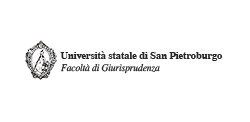Come riformare il Consiglio Superiore della Magistratura?
Archivio Penale
© dell'autore 2019
Ricevuto: 24 June 2019
| Accettato: 27 June 2019
| Pubblicato: 28 June 2019
L’intero articolo è disponibile
Riassunto
Il contributo si sofferma sulla riforma del Consiglio Superiore della Magistratura. In particolare, tenuto conto dei recenti scandali che hanno coinvolto alcuni dei suoi membri, l’A. affronta la questione della riforma delle loro modalità di selezione. Dopo aver dimostrato che la reputazione soggettiva dei membri non è meno importante della necessità di porre fine alle spartizioni correntizie che intervengono in vista delle elezioni, l’A. ricorda le buone soluzioni proposte al riguardo dalla Commissione Balboni nel 1997, quali l’introduzione del voto singolo trasferibile per quanto riguarda il sistema elettorale, e la trasformazione del Consiglio Superiore in organo “continuativo”, con l’effetto di non rendere simultanea l’elezione dei suoi membri, e di evitare così le accennate spartizioni correntizie.
How could the Superior Judicial Council be reformed?
The contribution is focused on the reform of Italy’s Superior Judicial Council. In particular, given the recent scandals involving some of its members, the Author dwells on how the selection of these could be changed. After having demonstrated that what is at stake is the members’ reputation no less than the need for avoiding the current packages among the Judiciary’s components in the election of the SJC’s members, the Author reminds the good solutions that had been proposed at this respect by the Balboni Commission in 1997, namely the introduction of a single transferable vote for the electoral system, and the transformation of the SJC into a continuing body, with the effect that the elections would not be simultaneous, thus avoiding the practice of packages among the Judiciary’s components.
Percorso di valutazione
Peer reviewed. Certificazione della qualità











